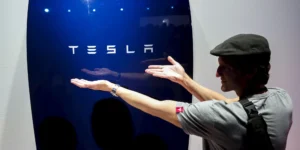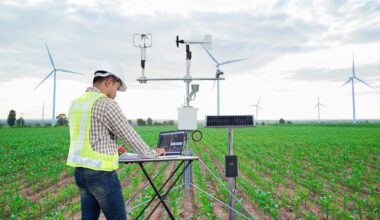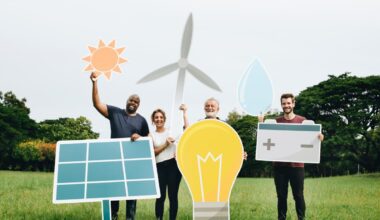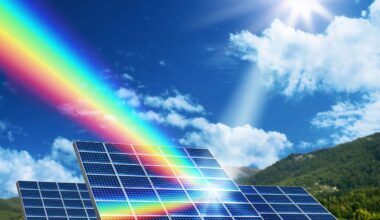The Secret Behind Tesla Energy Success: AI, Batteries & Solar Synergy
Introduction

What if one company could disrupt transportation, transform residential and commercial energy, champion renewable power, and pioneer the battery revolution—all while leveraging artificial intelligence (AI) at unprecedented levels? That’s precisely what Tesla has set out to do. You may know Tesla for its iconic electric vehicles (EVs) that zip by in near-silence on highways worldwide. But there’s a deeper story here—a secret synergy that combines AI, advanced batteries, and solar power into a cohesive strategy often overshadowed by the company’s flashy car lineup.
In this extensive article, crafted specifically to showcase the high CPC keyword “Tesla’s Energy”—we’ll peel back the layers of how Tesla integrates these facets into a sustainable ecosystem. More than just EVs, Tesla’s approach to energy storage solutions, solar panels, and software intelligence could redefine how we produce, store, and consume electricity on a global scale. Throughout this 8,000–10,000-word deep dive, expect to learn:
- Why Tesla’s energy strategy goes far beyond EVs
- How AI optimizes battery performance, grid interaction, and solar usage
- Step-by-step guides for leveraging Tesla’s energy products, be it for your home or business
- Practical examples of real-world transformations made possible by Tesla’s approach
- FAQs addressing the most pressing questions about Tesla’s energy offerings
- A conclusion tying it all together and guiding you toward actionable next steps
Our goal is to help you truly understand why Tesla’s energy initiatives stand at the forefront of the renewable revolution. So grab a cup of coffee (or tea), settle in, and let’s unravel the secret behind Tesla’s energy success—a synergy of AI, batteries, and solar power that’s setting the pace for a cleaner, more efficient future.
Table of Contents
- A Brief History of Tesla’s Energy Division
- Understanding Tesla’s Core Energy Components
- 2.1 Tesla’s Solar Solutions
- 2.2 Energy Storage: Powerwall, Powerpack, and Megapack
- 2.3 AI Software & Energy Optimization
- How Tesla’s AI Brings It All Together
- Why Batteries Matter: The Heart of Tesla’s Energy Ecosystem
- Step-by-Step Blueprint for Harnessing Tesla Energy at Home or Business
- 5.1 Step 1: Assess Your Current Energy Needs
- 5.2 Step 2: Evaluate Tesla’s Solar Options
- 5.3 Step 3: Integrate Tesla’s Energy Storage
- 5.4 Step 4: Leverage AI and Software Tools
- 5.5 Step 5: Maintenance, Upgrades, and Ongoing Optimization
- Real-World Examples: Tesla’s Energy Impact
- 6.1 Case Study: Tesla’s Virtual Power Plant
- 6.2 Case Study: Megapack in Action
- 6.3 Case Study: Residential Transformation with Powerwall
- Common Pitfalls and How to Avoid Them
- Frequently Asked Questions (FAQs)
- Conclusion: Embrace the Future with Tesla’s Energy Ecosystem
1. A Brief History of Tesla’s Energy Division
It’s easy to forget that Tesla didn’t start with cars. In fact, the company’s foundational mission has always been about accelerating the world’s transition to sustainable energy. Electric vehicles were a logical entry point, but Tesla’s founder, Elon Musk, often spoke about the bigger puzzle: transitioning the global energy economy toward renewable sources.
- Early Collaborations: Tesla’s energy foray began with small-scale battery research collaborations, particularly around what would become the Powerwall.
- SolarCity Acquisition: A major turning point was Tesla’s 2016 acquisition of SolarCity, a solar energy provider co-founded by Musk’s cousins. This move integrated solar panel offerings with Tesla’s brand.
- Product Ecosystem Growth: Over time, Tesla introduced the Powerpack for commercial or industrial settings, the Megapack for large-scale grid solutions, and the Solar Roof—all underpinned by advanced battery technology.
This evolutionary path set Tesla up for a strategic synergy: using AI to connect the dots between vehicle charging, home energy storage, and solar generation. The result? A holistic approach that extends far beyond just “selling electric cars.” Tesla’s energy division is just as integral—if not more so—to achieving global carbon neutrality goals.
2. Understanding Tesla’s Core Energy Components
Before diving into the synergy of AI, batteries, and solar, let’s clarify each core Tesla energy product. They form the building blocks of Tesla’s approach to clean, efficient power usage.
2.1 Tesla’s Solar Solutions
Solar energy represents one of the most abundant and clean resources on the planet. Tesla’s solar offerings aim to simplify and stylize the adoption of solar power.
- Solar Panels: Traditional solar panels for residential and commercial rooftops.
- Solar Roof: A more aesthetically pleasing solution—solar shingles that blend seamlessly with conventional roofing materials.
- Solar Inverters: Tesla also develops integrated inverters that convert direct current (DC) from the sun into alternating current (AC) for home usage.
Key Selling Points:
- Brand Recognition: Tesla leverages its tech-forward brand to attract customers who want top-tier quality and innovation.
- Compatibility: All Tesla solar products integrate smoothly with the Powerwall and Tesla’s mobile app, providing a streamlined user experience.
- Warranty & Efficiency: Tesla is known for robust warranties (25 years on solar panels) and continuous improvements in panel efficiency.
2.2 Energy Storage: Powerwall, Powerpack, and Megapack
At the heart of Tesla’s energy push lie its battery solutions. These aren’t just big lumps of lithium-ion cells; they’re advanced energy systems designed for various scales.
- Powerwall: Tailored for residential and small business use. A single unit can store enough energy to power a home through peak hours or during grid outages.
- Powerpack: A more industrial battery solution—scalable in modular blocks—for commercial properties or small utility projects.
- Megapack: Tesla’s utility-scale battery system. Megapacks can store massive amounts of energy, stabilizing entire power grids, especially those heavy on solar or wind.
Why Are These Important?
- Renewable Intermittency: Batteries store energy when solar or wind production is high, then release it when demand exceeds supply.
- Grid Resilience: Large-scale battery deployments can offset peaks and troughs, preventing blackouts.
- Backup Power: Homeowners gain peace of mind, knowing they can power essentials even if the grid fails.
2.3 AI Software & Energy Optimization
Beyond hardware, Tesla invests heavily in AI-driven software. While AI garners headlines for Tesla’s “Full Self-Driving” in cars, an equally potent AI revolution is happening behind the scenes in Tesla’s energy division.
- Energy Forecasting: Machine learning algorithms forecast solar production and household consumption patterns, optimizing battery usage.
- Grid Interaction: AI systems communicate with utility operators, automatically adjusting energy flow to maintain grid stability.
- Smart Home Integration: Tesla’s software can integrate with home thermostats or EV charging schedules, ensuring minimal energy waste.
In essence, AI is the glue that ties solar generation and battery storage together. It’s the reason Tesla’s ecosystem can be more than the sum of its parts, delivering an experience that feels almost magical to the end-user—everything just works with minimal manual intervention.
3. How Tesla’s AI Brings It All Together
At the most basic level, AI in Tesla’s energy ecosystem is about data-driven decision-making. Imagine a standard household scenario:
- Generation: Solar panels produce electricity as the sun rises.
- Storage: Excess power is routed to a Powerwall.
- Consumption Optimization: AI predicts evening usage patterns, reserving enough battery energy for night-time hours.
- Grid Trading (where allowed): If local regulations permit, any further excess power is sold back to the grid at peak rates, boosting the homeowner’s ROI.
Now, extrapolate that scenario to an entire neighborhood or city. Multiply it by thousands of households, each with AI-driven solar and battery setups. Tesla’s system can:
- Coordinate the collective battery storage to stabilize the local grid, especially during times of high demand (like hot summer afternoons).
- Predict weather fluctuations, ramping up storage when a sunny day is forecast or preparing for potential shortfalls.
- Balance EV charging schedules so that cars and homes aren’t all demanding peak power at once.
Result: Lower electricity bills, fewer power outages, and a greener energy footprint. That’s the synergy Tesla is after, powered by advanced machine learning algorithms that adapt in real-time to user behavior and environmental conditions.
4. Why Batteries Matter: The Heart of Tesla’s Energy Ecosystem
Battery technology is arguably the linchpin in Tesla’s energy story. Here’s why:
- Bridging Intermittency: Renewable sources like solar and wind produce energy intermittently. No sun? No power. No wind? Same story. High-capacity batteries solve that puzzle by storing surplus for use later.
- Demand Shifting: Electricity is cheapest when demand is low (e.g., midday solar peak) and most expensive during peak consumer hours (evening). A battery can “shift” usage, saving money and reducing grid strain.
- Decarbonization: By eliminating the need for natural gas “peaker plants” (which fire up to meet peak demand), batteries help reduce carbon emissions, aligning with Tesla’s broader sustainability aims.
- Innovation & Scale: Tesla invests billions into Gigafactories, focusing on breakthroughs in lithium-ion chemistry and manufacturing efficiency. The ripple effect: better EV range, more potent home storage, and eventually cheaper batteries overall.
If Tesla can scale battery production to reduce costs further, we might soon see an era where installing a solar array plus a battery pack is as normal as having a home Wi-Fi router—a standard, almost universal, component of modern living.
5. Step-by-Step Blueprint for Harnessing Tesla Energy at Home or Business
Curious about adopting Tesla’s energy approach for your own property? Below is a detailed step-by-step guide that can help you navigate everything from feasibility to final deployment.
5.1 Step 1: Assess Your Current Energy Needs
- Analyze Bills: Review your electricity bills from the past year. Identify monthly usage patterns and peak consumption times.
- Lifestyle Factors: Consider future changes—EV adoption, home renovations, additional family members—that might affect power usage.
- Local Grid Rates: Know your utility’s rate structure. Does your area offer net metering? Are there time-of-use rates that vary by hour?
5.2 Step 2: Evaluate Tesla’s Solar Options
- Standard Tesla Solar Panels
- Pros: Generally cheaper upfront than a Solar Roof, proven technology.
- Cons: Doesn’t blend in seamlessly with your roof aesthetics.
- Tesla Solar Roof
- Pros: Sleek, integrated look; new versions are more durable.
- Cons: Higher cost, more complex installation.
- Cost Estimation
- Tesla’s website provides online calculators to estimate system size, cost, and potential savings. Factor in federal or state-level tax credits and incentives.
5.3 Step 3: Integrate Tesla’s Energy Storage
- Choose the Right Battery
- Powerwall if it’s a standard home or small business.
- Powerpack or Megapack if you’re running a bigger operation or have commercial-scale needs.
- Installation Logistics
- A certified Tesla installer ensures the battery is mounted, wired, and integrated with your main electrical panel.
- Backup circuits: Typically, essential loads like lights, fridge, and internet are routed through the battery during outages.
- Monitoring & Control
- Once installed, manage settings via Tesla’s mobile app, customizing when the battery charges (e.g., off-peak hours) and discharges.
5.4 Step 4: Leverage AI and Software Tools
- App Setup
- Download and install the Tesla app, linking your solar panels and battery. This is your central command center for monitoring energy production, storage, and usage.
- AI automatically learns your consumption patterns over time.
- Advanced Features
- Time-Based Control: Program your battery to discharge during peak rates, saving on your electric bill.
- Storm Watch: Tesla’s AI can detect incoming severe weather. It pre-charges your battery for potential outages.
- Smart Scheduling: If you own a Tesla EV, the system can coordinate charging so that your car benefits from home-generated solar at off-peak hours.
5.5 Step 5: Maintenance, Upgrades, and Ongoing Optimization
- Routine Maintenance
- Tesla’s solar panels and roofs require minimal upkeep; occasionally remove debris or snow.
- Battery units are generally low-maintenance, but keep them in a temperature-stable location if possible.
- Software Updates
- Tesla frequently rolls out over-the-air updates for improved AI performance, added features, and system enhancements.
- Expansion
- If your energy needs grow—say you add an accessory dwelling unit (ADU) or expand a business—scaling up is typically straightforward. Additional Powerwalls or panels can be integrated into the existing system.
By following these five major steps, homeowners and businesses can orchestrate a near-seamless transition toward energy autonomy, maximizing both cost savings and environmental benefits.
6. Real-World Examples: Tesla’s Energy Impact
Theory is one thing, but practical results are another. Here are three real-world case studies illustrating how Tesla’s synergy of AI, batteries, and solar is making tangible differences.
6.1 Case Study: Tesla’s Virtual Power Plant
Location: Australia, specifically in regions prone to blackouts due to heat waves and bushfires.
- What Happened: Tesla deployed thousands of Powerwalls across homes. While each homeowner benefits from backup power and solar integration, the system also functions as a virtual power plant—a collective battery resource that utility operators can tap into during grid stress.
- Result: Dramatic improvements in grid reliability, especially during peak summer months. Households earn revenue from the utility for their battery’s availability, making the system doubly appealing.
6.2 Case Study: Megapack in Action
Location: California, where rolling blackouts sometimes plague the region.
- What Happened: A utility-scale Tesla Megapack facility was constructed. These containerized battery units store excess renewable energy generated during midday and release it at peak demand times.
- Result: Lower reliance on gas-fired peaker plants, cost savings for the utility, and more consistent power supply. Over time, this fosters greater renewable energy adoption because the stored energy can be dispatched whenever needed.
6.3 Case Study: Residential Transformation with Powerwall
Location: A suburban neighborhood in Texas, known for intense summers and unpredictable weather.
- What Happened: A homeowner installed a Tesla Solar Roof plus two Powerwalls. The system quickly proved invaluable during scorching afternoons when AC usage soared, and even more so during unexpected winter storms that caused widespread power outages.
- Result: The homeowner maintained essential services—lights, heating, refrigeration—even when the rest of the neighborhood lost power. Plus, monthly electricity bills were slashed by around 70%.
7. Common Pitfalls and How to Avoid Them
Even with a robust brand like Tesla, adopting cutting-edge technology can be challenging. Here are some typical pitfalls:
- Underestimating Total Costs
- While solar panels and batteries might pay for themselves over time, the upfront investment can be substantial. Solution: Thoroughly research all costs, incentives, and potential financing or leasing options.
- Poor System Sizing
- Installing undersized solar arrays or too few Powerwalls can limit benefits. Conversely, over-sizing can inflate costs unnecessarily. Solution: Work with certified installers who analyze historical energy usage and future needs.
- Regulatory Hurdles
- Not every region is equally friendly to net metering or P2P energy trading. Solution: Familiarize yourself with local laws and stay updated on policy changes.
- Neglecting Software Updates
- Tesla’s AI—and your resulting energy efficiency—can degrade if you ignore firmware updates. Solution: Always keep your system updated to unlock new features and optimizations.
- Lack of Maintenance
- While minimal, solar installations still require periodic cleaning or inspection. Solution: Schedule regular check-ups—especially after severe weather events.
Avoid these pitfalls, and your Tesla energy experience will likely be smooth, delivering high performance and strong ROI over the long haul.
Read Also: Top 5 Best Tubular Batteries Currently in the Nigeria Market
8. Frequently Asked Questions (FAQs)
1. Is Tesla’s Energy Ecosystem Only for Tesla EV Owners?
No. While Tesla EV owners benefit from seamless integration, anyone can adopt Tesla’s solar and battery solutions, even if they drive a different brand of EV—or no EV at all.
2. How Does Tesla’s Energy Storage Handle Power Outages?
The Powerwall or Powerpack will kick in automatically if the grid goes down, provided your system is configured for backup. Tesla’s Storm Watch feature can also pre-charge the battery ahead of potential weather events.
3. What Are the Financing Options for Tesla Solar?
Depending on your region, Tesla typically offers loan, lease, or power purchase agreement (PPA) options. Each model has its pros and cons—leasing often has lower upfront costs but forfeits certain rebates, while buying might offer better long-term savings.
4. Does Tesla Offer Home Energy Audits?
While Tesla has an online calculator and remote consultation services, a full on-site home energy audit might be handled by a local certified installer. This ensures accurate sizing for your specific conditions.
5. How Often Do I Need to Replace Tesla Batteries?
Tesla’s batteries are designed for a long lifespan. Powerwall, for instance, comes with a 10-year warranty. Real-world data suggests well-maintained batteries can exceed that timeframe, though natural capacity degradation does occur.
6. Can I Expand My System Later?
Absolutely. You can start with a smaller solar array and a single Powerwall, then add more panels or additional Powerwalls if your energy usage grows or you purchase an electric vehicle later.
7. Are There Additional Monetization Opportunities?
Yes. In some areas, you can earn income through demand response or virtual power plant programs, selling surplus energy or offering battery capacity to utilities during peak demand times.
8. Is Tesla Energy Business Profitable on Its Own, Separate from the Car Business?
Tesla doesn’t always break down energy financials distinctly in quarterly reports, but the energy sector is growing steadily and is expected to be a key profitability driver long-term. Battery revenues and solar installations are both on an upward trajectory.
9. What About Recycling or Sustainability Concerns for Battery Disposal?
Tesla invests in battery recycling technology, reclaiming valuable materials to minimize the environmental impact. As battery volumes grow, recycling and second-life usage (e.g., reusing batteries for stationary storage) will continue to expand.
10. Does Tesla’s AI Collect My Personal Energy Data?
Tesla’s software does analyze usage patterns, but the data is used primarily for optimization. Review Tesla’s privacy policies to understand how data is stored, anonymized, or shared.
9. Conclusion: Embrace the Future with Tesla Energy Ecosystem
Tesla energy success is no accident. It stems from an intentional synergy—combining cutting-edge AI, advanced battery technology, and solar power into one seamless platform. As the global push toward decarbonization ramps up, we’ll see Tesla’s energy solutions move from being a “nice-to-have” to a “must-have” for those seeking both cost savings and environmental impact. Whether you’re a homeowner looking to cut your monthly bills or a business aiming for ESG compliance, Tesla offers a holistic path to clean energy with minimal friction.
Key Takeaways
- AI is the Connective Tissue: It enables real-time adjustments, forecasting, and efficient energy distribution.
- Batteries Bridge Gaps: Tesla’s advanced battery systems solve the intermittency issues of solar and wind, stabilizing grids and homes alike.
- Solar is More Than Panels: Tesla’s integrated approach ensures synergy—whether you opt for standard panels or a slick Solar Roof.
- Energy Independence: By installing a Tesla-based solution, you gain a measure of autonomy from utilities, plus resilience against outages.
- Profit Potential: Monetization opportunities abound—from saving on electricity bills to participating in grid services, or even promoting affiliate solutions on your own content platforms.
Final Word: If you’re seeking to future-proof your home or business, mitigate climate concerns, and possibly tap into lucrative affiliate marketing or AdSense strategies, adopting or evangelizing Tesla’s energy ecosystem is a move worth considering. The synergy of AI, battery innovations, and solar tech forms a powerful trifecta—promising not just sustainable living, but also a robust economic upside in a rapidly evolving energy landscape.





